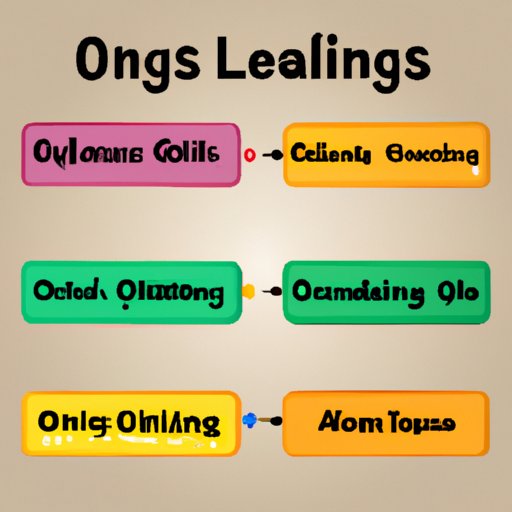
Introduction
Learning objectives are essential tools in education that help define what a learner should know or be able to do after completing a course or lesson. They set the foundation for lesson planning, assessment, and curriculum design. Writing effective learning objectives can be challenging, but it is crucial for the success of an education program. In this article, we will provide a comprehensive guide for educators on how to write effective learning objectives.
Step-by-Step Guide
Clear and measurable learning objectives are essential for designing effective education programs and measuring their success. Writing a learning objective involves several steps that can increase its accuracy and reliability.
Step 1: Start With the End in Mind. Before writing a learning objective, you need to identify the desired outcome. This outcome can be a skill, knowledge, or attitude. It is crucial to consider the audience and the learning environment when defining the outcome.
Step 2: Choose an Action Verb. The choice of the verb directly relates to the specificity and measurability of the objective. The Action verb describes what the learner will be able to do or demonstrate as evidence of learning. Examples of action verbs are analyze, apply, evaluate, create, etc.
Step 3: Define the Conditions. The conditions specify the context in which the learner will perform the task or demonstrate skill. This step makes the objective relevant to the learners, creating a connection between the lesson and their experiences. The conditions can include tools, materials, and resources needed to complete the task.
Step 4: Identify the Criteria. Criteria describe the quality or level of performance expected for the learner to achieve the objective. It should be realistic, achievable, and relevant to the desired outcome. Grading rubrics are helpful for defining criteria.
Step 5: Ensure the Objective is Measurable. Measurability is critical to determining the effectiveness of an education program. It is essential to ensure that the objective is specific, objective, and expressed in measurable terms. It will ensure that the teacher will be able to evaluate the success of their teaching method.
Examples
Examples of learning objectives include specific and measurable outcomes that are achievable by the learners. The following are some high-quality learning objectives:
- Students will be able to write a persuasive paragraph, including at least three supporting details.
- By the end of the course, students will analyze and critique primary sources to evaluate historical arguments and perspectives.
- Students will be able to diagnose and repair basic computer hardware and software problems.
It is critical to make sure each learning objective meets the characteristics of a good learning objective, such as being specific, measurable, achievable, relevant, and timely.
Additionally, learning objectives can be classified into three categories:
- Knowledge-based: Focus on acquiring information and understanding concepts and factual information.
- Skills-based: Focus on developing practical skills, such as problem-solving, critical thinking, or fine motor skills.
- Attitude-based: Focus on developing attitudes or values, such as empathy, cooperation, or tolerance.
Practical Tips
Writing effective learning objectives requires careful planning and consideration. The following tips can support educators in writing effective learning objectives:
- Align with the Curriculum: Learning objectives should align with the overall curriculum and course goals.
- Focus on Measurable Outcomes: Ensure that you can measure whether students have achieved the objective.
- Prioritize Student Learning: Ensure objectives are student-centered and designed to benefit the specific audience.
- Use Clear Language: Make sure the learning objective is easy to understand and straightforward.
- Use Action Verbs: Choose strong, descriptive verbs to clarify the content of the lesson and the expectations of the students.
Infographics
The following infographic outlines the essential components of a learning objective:

Case Studies
The following are case studies that highlight the importance of writing strong learning objectives:
Case Study 1: A teacher decides to teach his students how to identify the different types of clouds. He writes a learning objective, which states: By the end of the lesson, students will know what cumulus, stratus, and cirrus clouds are.
However, the learning objective failed to meet the criteria of a good learning objective, as it is not specific or measurable. The teacher revises the learning objective to read: By the end of the lesson, students will be able to identify cumulus, stratus, and cirrus clouds by analyzing pictures of clouds with 80% accuracy.
Case Study 2: A teacher teaches a lesson on fractions using visual aids, hands-on activities, and group work. She writes a learning objective, which reads: By the end of the lesson, students will have a better understanding of fractions.
While well-intentioned, the objective is too vague to be useful. The teacher revises the learning objective, now reading: By the end of the lesson, students will be able to identify and calculate equivalent fractions with 90% accuracy using manipulatives and visual aids.
Conclusion
Writing effective learning objectives is critical to the success of any education program. A well-written learning objective ensures that students understand what they will learn and what they are expected to do. This article has provided a comprehensive guide that breaks down the process of writing a learning objective into easy-to-follow instructions, which include examples and case studies that highlight effective practices. Following the step-by-step guide and incorporating the practical tips mentioned can create a strong foundation for any education program.




